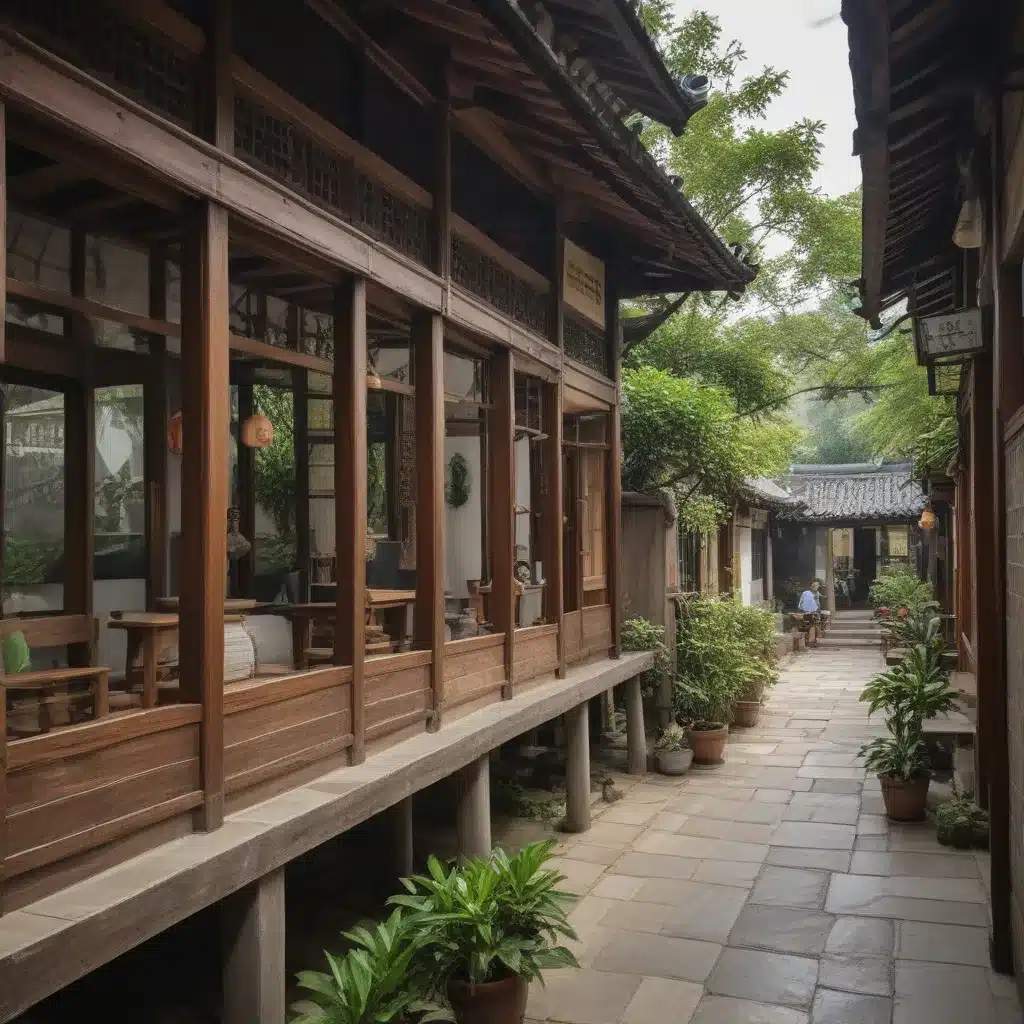
Stumbling Upon Authentic Korean Charm
While exploring the vibrant streets of Seoul, I found myself drawn to the historic neighborhood of Insadong, a true haven for those seeking a glimpse into Korea’s rich cultural heritage. As I meandered through the bustling alleyways, my curiosity led me to discover a serene traditional teahouse, tucked away from the main thoroughfare.
Passing through a small courtyard, I was greeted warmly by the lady who managed the teahouse. She invited me to remove my boots and don the provided slippers, a gesture that instantly made me feel like I had stepped into a different era. Choosing a spot on the floor seating, I perused the menu, intrigued by the array of traditional Korean tea and snacks on offer.
Soon, I was left alone to wander and soak in the tranquil atmosphere. The teahouse was exquisitely decorated, with intricate artwork and calligraphy adorning the walls. As I observed the square-shaped courtyard in the center, I realized that this, too, was a traditional Korean hanok, repurposed as a serene oasis for tea enthusiasts.
Deciding to embrace the moment, I sat down and began to meditate, letting the sounds of the brewing tea and the occasional bird’s chirp transport me to a state of serenity. When the aromatic tea and traditional Korean snacks finally arrived, I couldn’t help but feel a sense of awe and gratitude.
The large teacup provided a generous serving, and the warm, slightly sweet liquid was the perfect winter warmer. Complemented by the delectable Gotgamssam (a traditional Korean snack), it was a truly delightful experience. As I sipped and savored, I couldn’t help but reminisce about my previous visits to Korean teahouses, each one leaving a unique impression.
Insadong: A Cultural Treasure Trove
Insadong is not just a collection of traditional teahouses; it is a vibrant tapestry that weaves together centuries-old Korean culture and contemporary artistic expression. As I continued my exploration of this captivating neighborhood, I discovered a myriad of galleries, artisan shops, and unique cultural experiences that left me in awe.
One of the highlights was stumbling upon a small, unassuming gallery that showcased the work of a renowned traditional Korean calligrapher. The intricate strokes and the powerful emotions conveyed through the ink-on-paper creations were a true testament to the skill and artistry of the master. I spent a considerable amount of time admiring the pieces, and the gallery owner graciously shared the stories behind the works, further deepening my appreciation for this timeless art form.
As I explored Insadong’s winding streets, I discovered a treasure trove of traditional Korean handicrafts, from delicate ceramics to intricate woodcarvings. Each shop seemed to have its own unique character, with proprietors eager to share the stories and techniques behind their creations. I found myself drawn to a particular workshop where a skilled artisan was meticulously crafting hanji, the traditional Korean handmade paper, into stunning lanterns and screens.
But Insadong’s cultural offerings go beyond the visual arts. As I had experienced in the traditional teahouse, the neighborhood is also a hub for preserving and sharing Korea’s rich culinary heritage. From the aromatic street food stalls to the family-run restaurants serving up time-honored dishes, Insadong was a feast for the senses.
Embracing the Slow Pace of Tradition
As I wandered through Insadong, I couldn’t help but be struck by the stark contrast between the neighborhood’s unhurried pace and the frenetic energy of Seoul’s bustling streets. It was as if I had stepped into a different world, one where time seemed to slow down and the focus shifted from the pursuit of efficiency to the appreciation of tradition and artistry.
This realization became even more apparent as I stumbled upon a small, unassuming pottery studio. The proprietor, a soft-spoken artisan, welcomed me into his workspace, where the rhythmic spin of the potter’s wheel and the gentle hum of the kiln created a soothing, meditative atmosphere. As he demonstrated the intricate process of hand-crafting traditional Korean ceramics, I found myself captivated by the patience and precision required.
| Traditional Korean Teahouses | Contemporary Korean Teahouses |
|---|---|
| Offer an authentic, immersive cultural experience | May cater to a more modern, tourist-oriented clientele |
| Serve traditional Korean teas and snacks | May offer a wider range of tea options, including fusion or experimental blends |
| Often housed in traditional Korean hanok buildings | Can be located in more modern or commercial settings |
| Emphasize the quiet, contemplative aspects of tea culture | May have a more lively, social atmosphere |
This encounter reminded me of the importance of slowing down and savoring the moment, a principle that lies at the heart of Korean tea culture. As I made my way back to my hotel in Seoul, I couldn’t help but feel a renewed sense of appreciation for the rich tapestry of traditional arts and crafts that Insadong had so generously shared with me.
Discovering the Magic of Insadong
Insadong is more than just a neighborhood in Seoul; it is a living, breathing testament to Korea’s enduring cultural legacy. From the serene traditional teahouses to the vibrant galleries and artisanal workshops, this enchanting enclave offers a profound and immersive experience for those seeking to connect with the soul of the country.
As I reflect on my time in Insadong, I am struck by the way in which the neighborhood seamlessly blends the old and the new, the traditional and the contemporary. It is a place where the past and present coexist in a delicate balance, inviting visitors to slow down, savor the moment, and discover the magic that lies within.
Whether you’re a tea enthusiast, an art aficionado, or simply someone in search of a deeper connection with Korean culture, Insadong is a destination that will undoubtedly leave a lasting impression. So the next time you find yourself in Seoul, be sure to wander the enchanting streets of this remarkable neighborhood and immerse yourself in the timeless charm of Insadong’s traditional teahouses and galleries.

